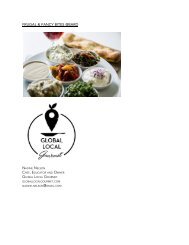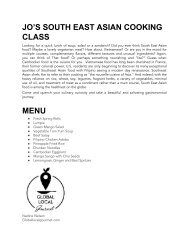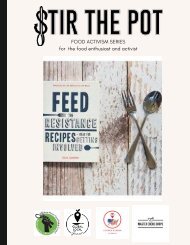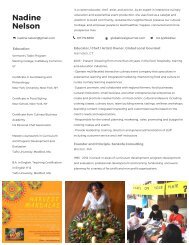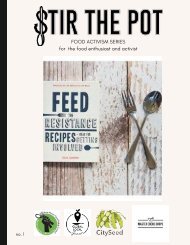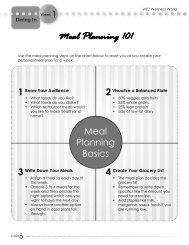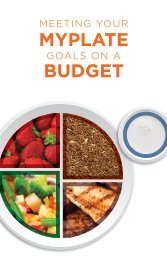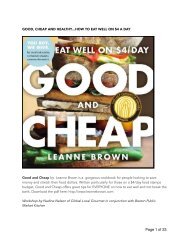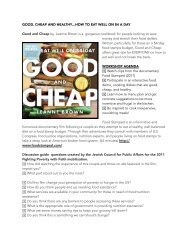APATT_CommunityActionGuide
You also want an ePaper? Increase the reach of your titles
YUMPU automatically turns print PDFs into web optimized ePapers that Google loves.
30 Take Your Place Community Action Guide<br />
Glossary<br />
Agricultural subsidies: Government funds paid to farmers to supplement their income, manage the<br />
food supply, and influence the cost and supply of crops.<br />
Child Nutrition and WIC Reauthorization Act: Federal legislation that authorizes all federal school<br />
meal and child nutrition programs, including the National School Lunch Program.<br />
Commercial farming: Large-scale production of crops for sale, intended for widespread distribution<br />
and profit.<br />
Commodity crops: Crops like corn, soy, wheat and rice that are common raw ingredients in our<br />
food supply. Farmers typically receive subsidies for commodity crops, which keeps the cost of these<br />
crops low.<br />
Farm Bill: A major bill that Congress debates and passes about every five years that sets the course<br />
of US farm and food policy, including crop subsidies and food assistance.<br />
Food Assistance Program: An intervention program used to address hunger, such as WIC (see<br />
below), SNAP (see below), subsidized school lunches and food bank distributions.<br />
Food deserts: Areas in the United States, predominately in lower-income neighborhoods and<br />
communities, with limited access to affordable and nutritious food.<br />
Food insecurity: Having uncertain access to enough nutritious food to lead an active and healthy life.<br />
Hypertension: Another term for high blood pressure, when the force of blood against the heart’s<br />
artery walls is hard enough to cause heart problems. Being overweight or obese is a major risk factor<br />
for hypertension.<br />
Obesity: An excessively high amount of body fat or adipose tissue in relation to lean body mass. An<br />
adult is considered obese if his or her body mass index, a calculation based on an individual’s weight<br />
and height, is 30 or higher. Obesity increases risk for diseases and health problems such as heart<br />
disease, diabetes and high blood pressure.<br />
Processed food: The definition of processed food can vary, but in general refers to foods that are<br />
prepackaged in boxes, cans, cartons or bags. These foods have been processed, using methods such<br />
as canning, cooking, freezing or dehydrating. Although some processing of food does little harm<br />
(think milk and whole-wheat bread), often the processing of food involves the addition of artificial<br />
ingredients and chemicals and removes important nutrients. Soda, chips, candy bars, cereal, hot dogs<br />
and TV dinners are all common examples of this kind of processed food.







